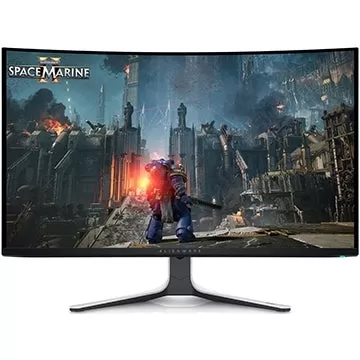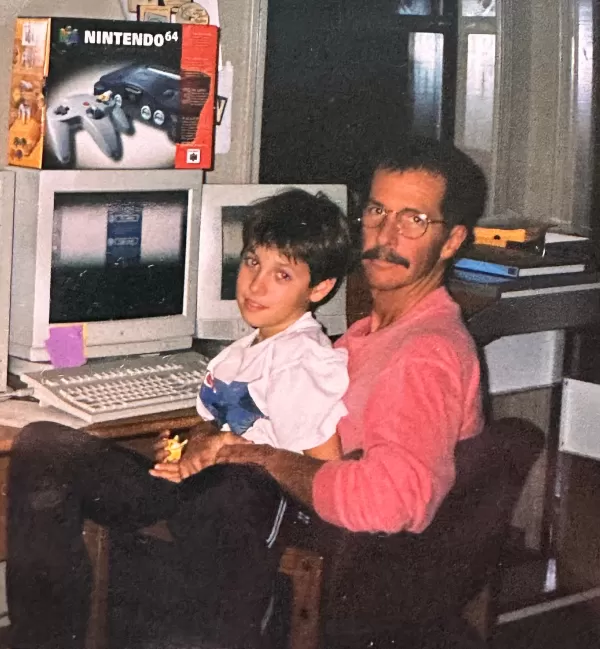A monitor is the ultimate gaming accessory, essential for maximizing the stunning graphics and rapid refresh rates that your gaming PC is capable of delivering. Why invest in a high-end graphics card and CPU if your display can't showcase their full potential? That's why we've curated a list of the best gaming monitors, designed to deliver crisp visuals and smooth motion fidelity, ensuring you experience PC games exactly as intended.
TL;DR – These Are the Best Gaming Monitors:
 Our Top Pick### Gigabyte FO32U2 Pro
Our Top Pick### Gigabyte FO32U2 Pro
6See it at AmazonSee it at Newegg ### AOC Q27G3XMN Mini-LED Gaming Monitor
### AOC Q27G3XMN Mini-LED Gaming Monitor
2See it at Amazon ### Acer Predator X34 OLED
### Acer Predator X34 OLED
0See it at AmazonSee it at B&H  ### Dell Alienware AW2725Q
### Dell Alienware AW2725Q
1See it at Dell ### Asus ROG Swift PG27AQDP
### Asus ROG Swift PG27AQDP
0See it at Newegg ### Asus TUF Gaming VG279QM
### Asus TUF Gaming VG279QM
1See it at AmazonYour gaming monitor should be tailored to match your PC's capabilities; there's no benefit in choosing one of the best 4K monitors if games are unplayable with a GeForce RTX 4060 at that resolution. Similarly, pairing a Radeon RX 7900 XTX with a 1080p display would be underutilizing your hardware. The top gaming monitors showcase your system's full potential, offering excellent picture quality, swift response times, and a range of gaming features. High refresh rates ensure smooth gameplay, and those extra milliseconds can be crucial for competitive gamers.
Whether you're looking for a future-proof option with a sharp 4K picture, an OLED panel, and a 240Hz refresh rate—like our top pick, the Gigabyte FO32U2 Pro—or you have a more budget-friendly setup better suited for a great budget monitor, we've got options to fit every need. All our recommended gaming monitors have been thoroughly evaluated by our team to meet diverse gaming requirements.
Looking for savings? Be sure to check out the best gaming monitor deals happening right now.
Gigabyte Aorus FO32U2 Pro – Photos
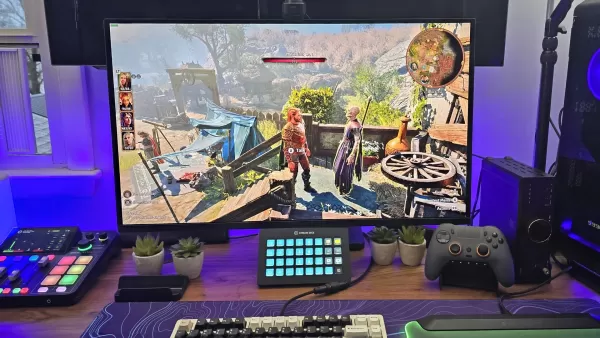
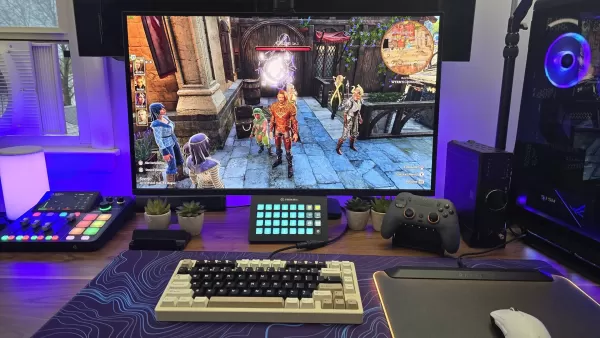 13 Images
13 Images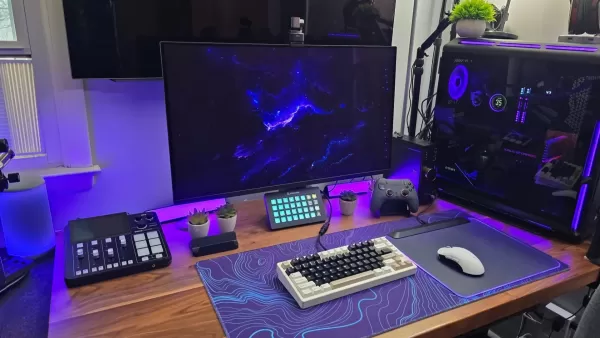


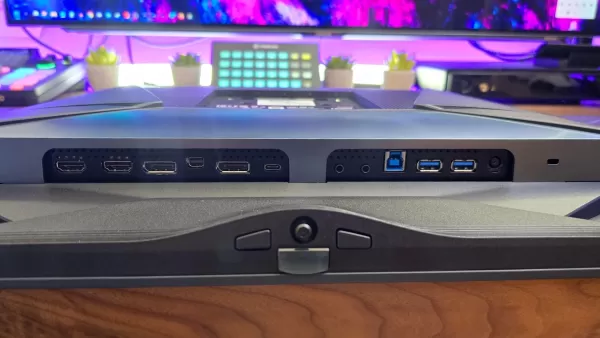 1. Gigabyte FO32U2 Pro
1. Gigabyte FO32U2 Pro
Best Gaming Monitor
 Our Top Pick### Gigabyte FO32U2 Pro
Our Top Pick### Gigabyte FO32U2 Pro
6This stunning monitor excels in every aspect, thanks to its comprehensive features and OLED panel. See it at AmazonSee it at NeweggProduct SpecificationsScreen size31.5"Aspect ratio16:9Resolution3840x2160Panel typeOLEDHDR compatibilityHDR TrueBlack 400Brightness1,000 nitsRefresh rate240HzResponse time0.03msInputs2 x HDMI 2.1, 1 x DisplayPort 1.4PROSOutstanding picture qualityExtremely thin panelCONSExpensiveThe Gigabyte FO32U2 Pro is a testament to the rising prominence of OLED technology in premium gaming monitors. This 32-inch 4K monitor boasts an ultra-slim panel and one of the brightest displays I've encountered. Though it comes with a higher price tag, the exceptional quality justifies the investment, making it a worthwhile choice for those seeking top-tier performance.
This monitor is designed with forward-thinking in mind. While most current graphics cards struggle to drive a 4K monitor at 240Hz, the Gigabyte Aorus FO32U supports this high refresh rate, ensuring longevity as your PC upgrades over the years. It even supports DisplayPort 2.1, a feature not yet common in current-generation PCs.
The OLED panel delivers remarkable color accuracy, covering up to 99% of the DCI-P3 color gamut, rivaling displays intended for professional creatives. With a peak brightness of 1,000 nits and a contrast ratio of 1.5M:1, every game, movie, or desktop application appears vivid and lifelike.
As a flagship gaming monitor in 2024, it also includes user-friendly features like picture-in-picture and an automatic black equalizer. With the Gigabyte Control Center, you can adjust image settings directly from your desktop via a USB connection, enhancing the user experience beyond typical OSD navigation.
This monitor truly represents a dream for gamers, offering premium quality that matches its price.
 2. AOC Q27G3XMN Mini-LED
2. AOC Q27G3XMN Mini-LED
Best Budget Gaming Monitor
 ### AOCQ27G3XMN Mini-LED Gaming Monitor
### AOCQ27G3XMN Mini-LED Gaming Monitor
0This monitor delivers true HDR gaming at a budget-friendly price, thanks to its mini-LED backlight technology. See it at AmazonProduct SpecificationsScreen size27"Aspect ratio16:9Resolution2560x1440Panel typeVAHDR compatibilityHDR1000Brightness1,000 nitsRefresh rate180HzResponse time1ms (GTG)Inputs1 x DisplayPort 1.4, 2 x HDMI 2.0, 1 x 3.5mm AudioPROSMini-LED backlight technologyHigh refresh rate for improved responsiveness and decreased motion blurPeak brightness of 1,000 nits for true HDRCONSNo USB connectivityLimited local dimming zonesThe AOC Q27G3XMN offers an authentic HDR gaming experience at a fraction of the cost typically associated with this technology. Its mini-LED backlight enhances localized brightness and contrast up to 1,000 nits, providing a full-fledged HDR experience that outshines the common "HDR 400" or "HDR compatible" labels.
Utilizing a VA panel, this monitor achieves superior contrast even without local dimming. With 336 local dimming zones, it offers precise control over shadows and blacks, a feature usually found in more expensive monitors. Despite this, it remains an excellent choice for budget-conscious gamers, delivering crisp visuals and responsive gameplay on its 27-inch 1440p screen.
While it lacks amenities like built-in speakers or a USB hub, the value it offers for its price is undeniable. However, the monitor's local dimming zones, though impressive for its price, can cause noticeable blooming around bright objects on dark backgrounds. This issue may diminish over time as users become accustomed to it, but it's worth noting.
Despite this minor flaw, the AOC Q27G3XMN is a standout choice for those seeking impressive visuals without breaking the bank.
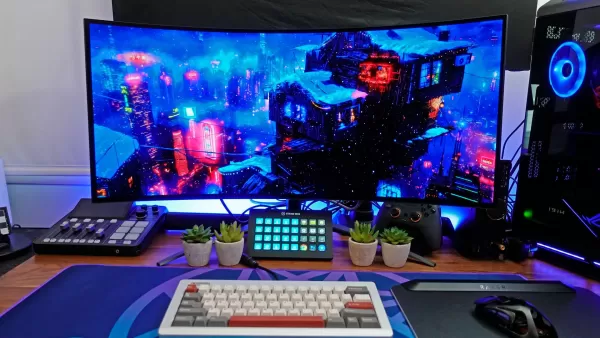 3. Acer Predator X34 OLED
3. Acer Predator X34 OLED
Best Ultrawide Gaming Monitor
 ### Acer Predator X34 OLED
### Acer Predator X34 OLED
0The Acer Predator X34 OLED combines a spacious 34-inch 21:9 display with flagship gaming monitor features, offering an immersive experience. See it at AmazonSee it at B&H Product SpecificationsScreen size34Aspect ratio21:9Resolution3440x1440Panel typeOLEDHDR compatibilityVESA DisplayHDR True Black 400Brightness1,300 cd/m2 (peak)Refresh rate240HzResponse time0.03msInputs2 x HDMI 2.1, 1 x DisplayPort 1.4, 2 x USB 3.2 Gen 2 Type-CPROSDeep blacks and bright highlightsRich, engaging colorsExcellent refresh rate and response timeOffers an immersive gaming experience CONSDeep curvature isn't for everyoneOnly reference preset is DCI-P3, not sRGBThe Acer Predator X34 OLED stands out as the premier ultrawide gaming monitor for 2025. Its expansive 34-inch 21:9 display, combined with its bright, fast, and immersive qualities, makes it a visual feast.
This model features a deeply curved 800R OLED panel, enhancing immersion by extending into your peripheral vision. While this curvature is ideal for gaming, it may cause slight text warping, which could be less suitable for productivity tasks.
Like other OLED monitors, it offers an incredibly responsive 0.03ms response time, outpacing IPS, VA, and TN panels. Coupled with its 240Hz refresh rate, it delivers virtually non-existent input latency, perfect for competitive gaming.
Its OLED panel ensures stunning visuals, with a peak brightness of 1,300 nits that creates lifelike highlights and infinite blacks. However, it lacks an sRGB mode, which may disappoint content creators. Fortunately, it does include a DCI-P3 mode, providing a reliable reference preset for digital artists.
Alienware AW2725Q - Photos
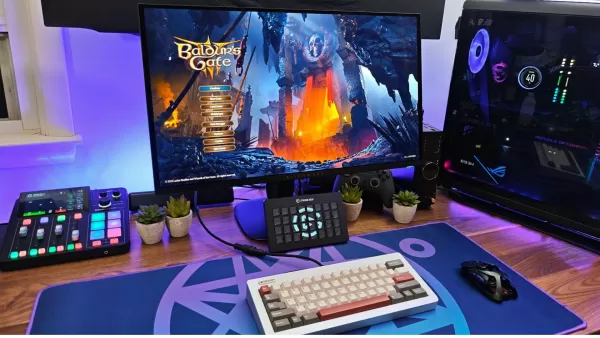
 15 Images
15 Images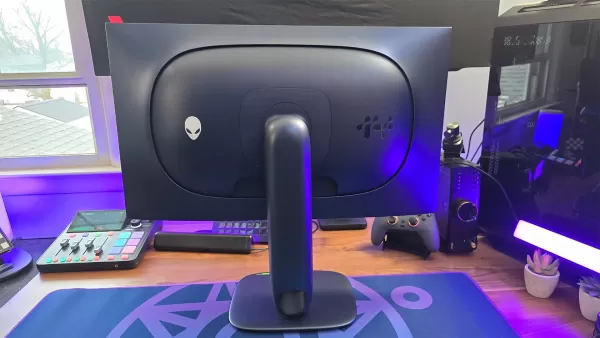
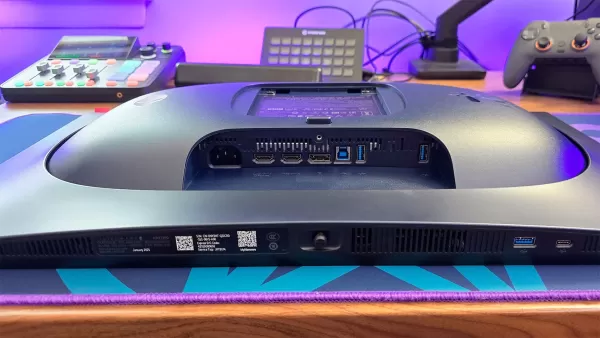
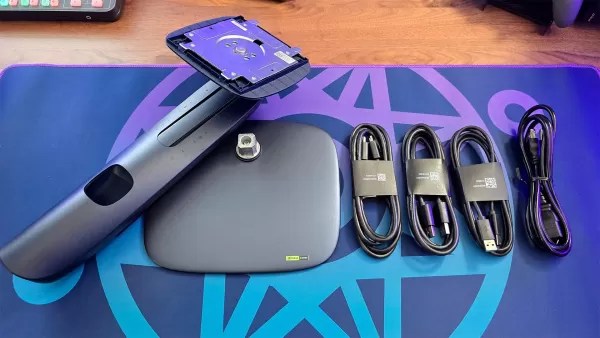
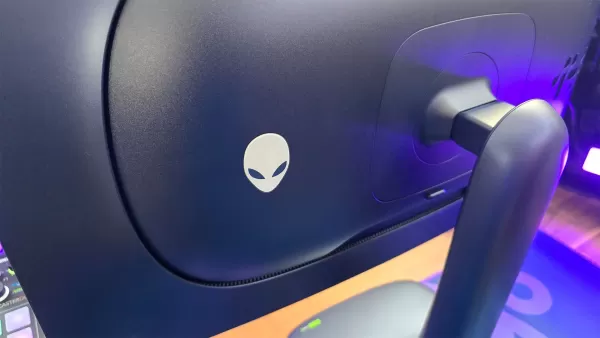 4. Dell Alienware AW2725Q
4. Dell Alienware AW2725Q
Best 4K Gaming Monitor
 ### Dell Alienware AW2725Q
### Dell Alienware AW2725Q
1The Dell Alienware AW2725Q offers exceptional value among high-end 4K gaming monitors, with Dolby Vision support and a design friendly to console gamers. See it at DellProduct SpecificationsScreen size26.7"Aspect ratio16:9Resolution3840x2160Panel typeQD-OLEDHDR compatibilityVESA DisplayHDR True Black 400Brightness1,000 nitsRefresh rate240HzResponse time0.03msInputs2 x HDMI 2.1, 1 x DisplayPort 1.4, 3 x USB 3.2 Gen 1 Type-A, 1 x USB 3.2 Gen 1 Type-CPROSGorgeous picture with high PPI for improved clarityImpressive color accuracy right out of the boxGood value for what it offersCONSLow SDR brightnessLacks DisplayPort 2.1The Dell Alienware AW2725Q is a standout choice for those seeking top-tier visuals and performance at 4K. It features an upgraded QD-OLED panel and a 240Hz refresh rate, surpassing its predecessor. Its sleek, sci-fi-inspired design ensures it blends well with various gaming setups.
With a 27-inch screen and 166PPI, this monitor delivers crisp, well-defined details. Its OLED panel offers outstanding colors, enhanced by VESA DisplayHDR True Black 400 certification and Dolby Vision HDR support.
My review found the AW2725Q's picture quality to be exceptional, with a variety of preset modes and calibration options. It's factory-calibrated for content creators, ensuring out-of-the-box accuracy.
While its SDR brightness is low, typical for OLED monitors, its HDR performance reaches 1,000 nits for vibrant highlights. Coupled with a 0.03ms response time and 240Hz refresh rate, it's ideal for competitive gaming where motion clarity is crucial.
It supports only DisplayPort 1.4, which may require Display Stream Compression for full resolution and refresh rate. However, this is visually lossless and only affects multi-display setups or alt-tabbing.
Priced at $899 at launch, it offers excellent value and is expected to become more affordable over time.
Asus ROG Swift OLED PG27AQDP – Photos
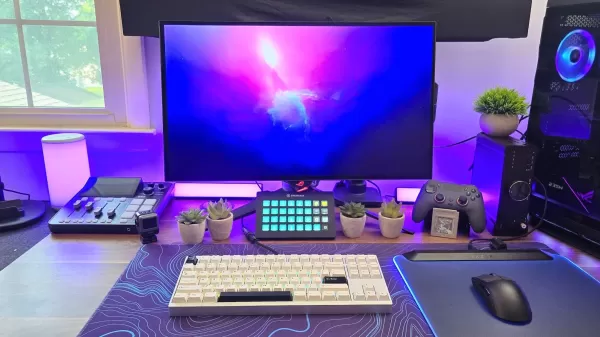
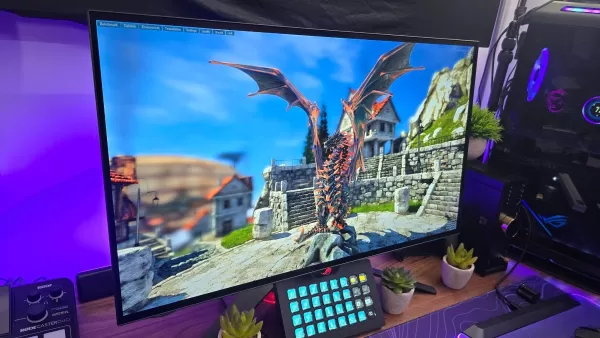 19 Images
19 Images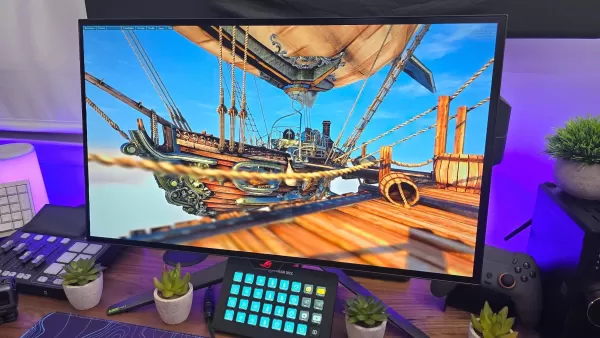
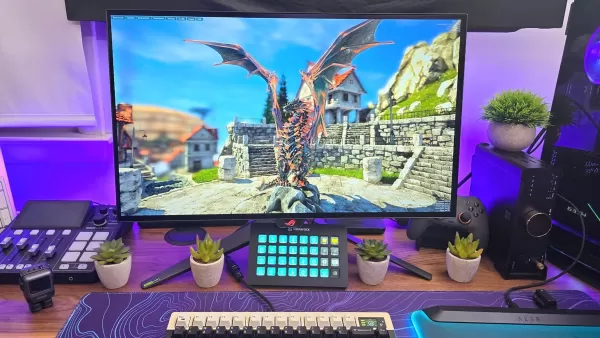
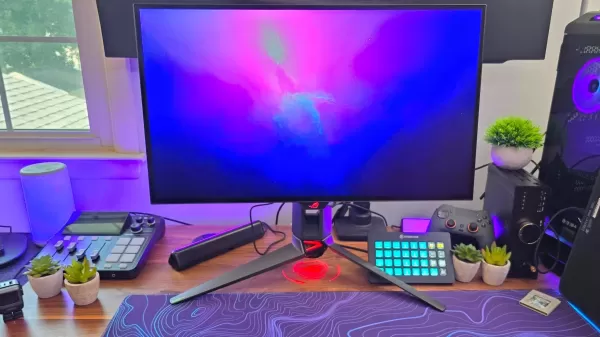
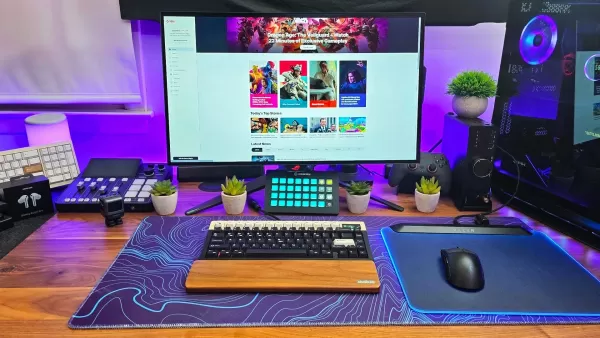 5. Asus ROG Swift PG27AQDP
5. Asus ROG Swift PG27AQDP
Best 1440p Gaming Monitor
 ### Asus ROG Swift PG27AQDP
### Asus ROG Swift PG27AQDP
0The Asus ROG Swift PG27AQDP is an exceptional 1440p monitor, perfect for esports and other gaming needs, offering top-notch performance at a competitive price. See it at NeweggProduct SpecificationsScreen size26.5Aspect ratio16:9Resolution2560 x 1440Panel typeOLED FreeSync Premium, G-Sync CompatibleHDRVESA DisplayHDR True Black Brightness1,300 cd/m2 (peak)Refresh rate480HzResponse time 0.03msInputs2 x HDMI 2.1, 1 x DisplayPort 1.4, 2 x USB 3.2 Gen 2 Type-A, HeadphonesPROSPerfectly sized for 1440pCan get exceptionally bright and infinitely dark for great HDRNative 480Hz refresh rateOut of the box color accuracyCONSFew games, outside of esports, will ever hit 480HzThe Asus ROG Swift PG27AQDP is the ultimate choice for 1440p gaming, particularly in esports. Priced competitively, it offers superior HDR performance and impressive out-of-the-box color accuracy.
Its standout feature is the 480Hz refresh rate, nearly matching the fastest monitors available today, without sacrificing image quality. The WOLED panel delivers rich colors and impeccable contrast, making it ideal for gaming, movies, and any visual content.
The fast refresh rate and 0.03ms response time virtually eliminate motion blur, providing a clear advantage in competitive gaming. Additionally, it features robust OLED protection mechanisms, including pixel shifting, real-time dimming, and a high-performance cooling system, all backed by a three-year warranty with burn-in coverage.
Although it lacks a KVM or USB video input, the PG27AQDP's comprehensive features make it a top contender in its class.
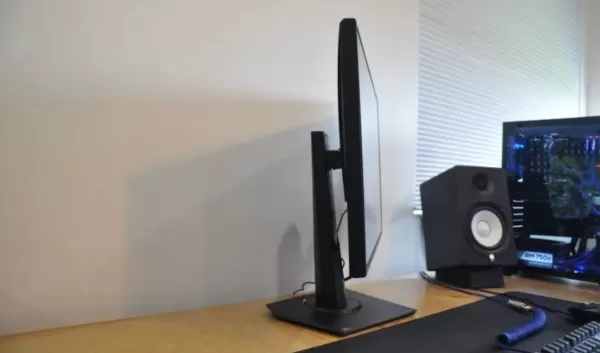 Adjustable stand on the Asus TUF Gaming VG279QM6. Asus TUF Gaming VG279QM
Adjustable stand on the Asus TUF Gaming VG279QM6. Asus TUF Gaming VG279QM
Best 1080p Gaming Monitor
 ### Asus TUF Gaming VG279QM
### Asus TUF Gaming VG279QM
1The Asus TUF Gaming VG279QM is an affordable 27-inch Full HD display with an overclockable 240Hz refresh rate, low input lag, and adaptive sync for smooth gameplay. See it at AmazonProduct SpecificationsScreen size27"Aspect ratio16:9Resolution1,920 x 1,080Panel typeIPS FreeSync, G-Sync compatibleBrightness400cd/m2Refresh rate240Hz, 280Hz (OC)Response time1ms (GtG)Inputs2 x HDMI 2.0, 1 x DisplayPort 1.2PROSBudget priceExcellent motion handlingCONSSome pixel peeping1080p monitors continue to hold their ground, especially with budget-friendly options like the Asus TUF Gaming VG279QM. For under $300, this monitor offers an overclockable 240Hz refresh rate, a one-millisecond response time, and low input lag, ensuring smooth gameplay. FreeSync and G-Sync compatibility further enhance the visual experience by eliminating screen tearing.
Its 27-inch screen size is well-suited for 1080p, though some pixel peeping may occur. The IPS panel provides good viewing angles and color reproduction, with a 400-nit brightness suitable for brighter environments. Despite being DisplayHDR 400 certified, its HDR performance is limited due to a mediocre contrast ratio and lack of local dimming.
Additional features like a height-adjustable stand and multiple connectivity options make it a valuable choice for gamers on a budget, offering a large, engaging display at an affordable price.
AnswerSee Results How to Choose a Gaming MonitorWhen selecting a gaming monitor, consider these key factors: screen size, resolution, panel type, and aspect ratio. We'll also explore technical aspects like refresh rate and variable refresh rate technology to guide your decision.
Screen size: The first question to answer is "How big?" This depends on your space and needs. Whether you're in a small dorm or looking to replace your TV, measure your area to ensure the right fit. For 1080p, up to 27 inches is ideal; for 1440p, 27 to 32 inches work well; and for 4K, 32 inches is recommended for typical desk use, with larger sizes suitable for greater viewing distances.
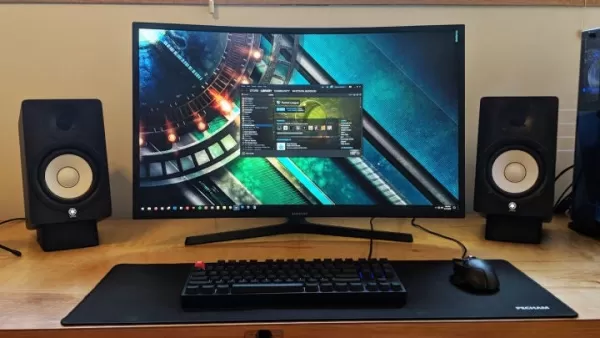 Aspect ratio: This influences the shape of your display. Most monitors are widescreen with a 16:9 aspect ratio, while ultrawide monitors feature a 21:9 ratio, and the newest models may offer 32:9 for an even wider view.
Aspect ratio: This influences the shape of your display. Most monitors are widescreen with a 16:9 aspect ratio, while ultrawide monitors feature a 21:9 ratio, and the newest models may offer 32:9 for an even wider view.
Screen resolution: This affects the sharpness of your display. Choose from Full HD (1920x1080), Quad HD (2560x1440), or Ultra HD/4K (3840x2160). Higher resolutions require more powerful graphics cards to maintain high frame rates.
Panel type: Different panel types offer unique advantages. Avoid TN panels due to their outdated technology. IPS panels excel in color reproduction and viewing angles, while VA panels balance image quality with response time. Mini-LED backlighting enhances HDR with local dimming but may cause blooming. OLED panels provide the best contrast and HDR, though they can suffer from burn-in and lower SDR brightness.
 Response time: Competitive games benefit from 1ms response times, while most single-player games can handle 3-5ms. OLED panels offer the fastest response times at around 0.03ms, ideal when paired with high refresh rates.
Response time: Competitive games benefit from 1ms response times, while most single-player games can handle 3-5ms. OLED panels offer the fastest response times at around 0.03ms, ideal when paired with high refresh rates.
Refresh rate: This determines how often your screen refreshes the image. Standard refresh rates start at 60Hz, but gaming monitors often go up to 120Hz, 144Hz, 240Hz, 360Hz, or even 500Hz for smoother gameplay. Higher refresh rates reduce input latency and enhance responsiveness.
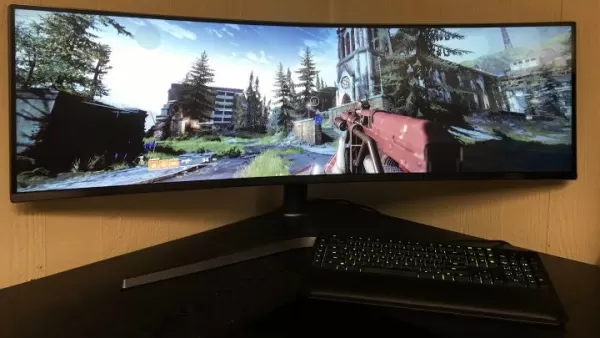 G-Sync vs FreeSync: Variable refresh rate (VRR) technologies like Nvidia G-Sync and AMD FreeSync synchronize your monitor's refresh rate with your GPU's frame output, preventing screen tearing. Ensure your graphics card is compatible with your chosen VRR technology.
G-Sync vs FreeSync: Variable refresh rate (VRR) technologies like Nvidia G-Sync and AMD FreeSync synchronize your monitor's refresh rate with your GPU's frame output, preventing screen tearing. Ensure your graphics card is compatible with your chosen VRR technology.
Ensure your video card can handle the monitor's resolution and refresh rate to avoid wasting money on a display your system can't fully utilize.
Gaming Monitor vs. Gaming TV: Which Is Best for You?
Choosing between a gaming monitor and a gaming TV depends on your gaming preferences. For a large-screen experience, a gaming TV might be ideal, but monitors often offer better gaming performance.
Image Quality: High-end TVs with OLED or mini-LED backlights excel in brightness, contrast, and color, often at a lower cost than comparable monitors. However, this varies based on specific features.
Gaming Performance: Monitors generally offer lower input lag, higher refresh rates, and faster response times. Budget monitors can reach high frame rates, while gaming TVs typically cap at 60Hz or 120Hz.
Pixel Response Time: Both monitors and TVs perform similarly, with OLED panels offering near-instantaneous response times.
Price and Features: Monitors often provide better value, with budget-friendly options offering gaming features like high refresh rates and adaptive sync. Gaming TVs may lack essential features like standby mode, increasing the risk of burn-in.
Size: Gaming monitors larger than 43 inches are rare, making TVs a better choice for couch gaming. Larger screens at your desk can enhance immersion but require more space.
Gaming Monitor FAQ
What's the difference between Nvidia G-Sync and AMD FreeSync?
Both technologies use VRR to synchronize your display's refresh rate with your GPU's frame rate, eliminating screen tearing. They follow the VESA Adaptive-Sync standard, with most FreeSync displays being G-Sync compatible.
Nvidia offers G-Sync Compatible, G-Sync, and G-Sync Ultimate tiers, with varying levels of hardware support and performance. AMD's FreeSync, FreeSync Premium, and FreeSync Premium Pro offer similar tiers, with Premium Pro adding HDR support and higher refresh rates.
What’s the best resolution for a gaming monitor?
The best resolution depends on your needs. For high refresh rates or budget systems, 1080p is ideal. For crisp visuals, 4K is perfect for 27-inch or larger screens but requires powerful hardware. 1440p offers a balance of sharpness and performance, suitable for competitive gaming with mid-range or better graphics cards.
Is HDR worth it?
HDR enhances color, brightness, and contrast, making images more vivid and detailed. It's valuable for cinematic games and competitive play. However, not all HDR monitors deliver true HDR; look for at least 1000 nits of peak brightness for a genuine HDR experience.
When is the best time to get a gaming monitor?
Gaming monitors can be expensive, so consider buying during major sales like Amazon Prime Day, Black Friday, or Cyber Monday. Also, check for deals when new monitor models are announced, as older models often go on sale.

